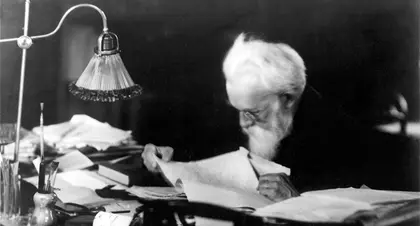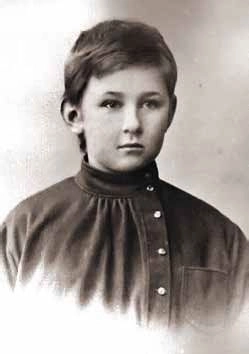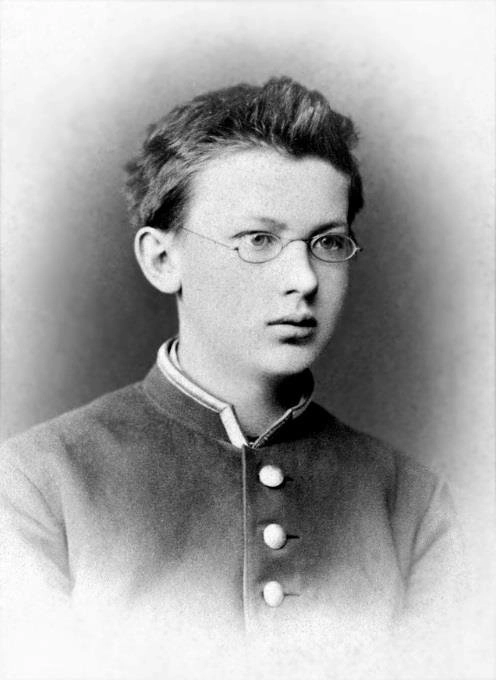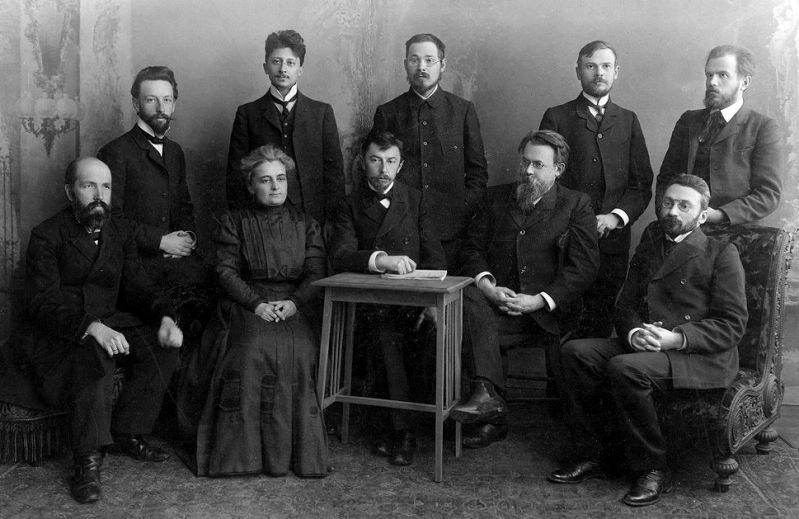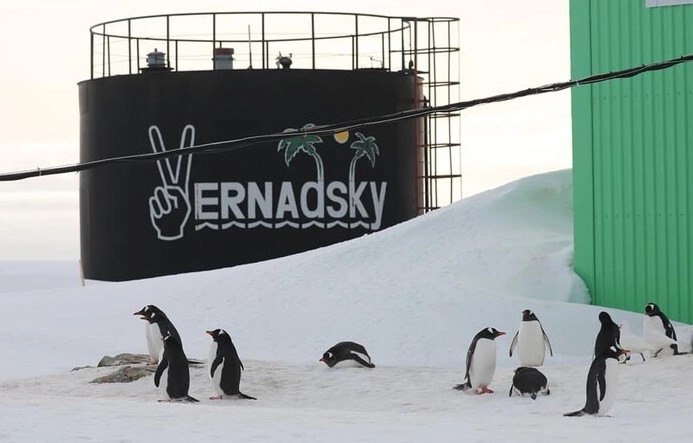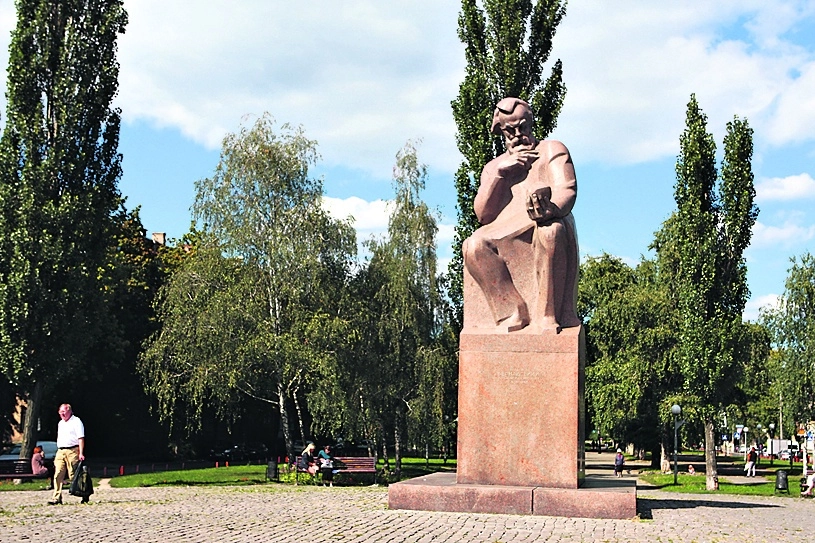An outstanding naturalist, thinker and public figure, Volodymyr Vernadsky was the founder of complex sciences such as geochemistry, biogeochemistry, hydrogeology, radiogeology, genetic mineralogy and others.
His works contributed decisively to the doctrine of the biosphere and its evolution into the noosphere – a new, higher level determined by the emergence and development of human civilization, with its increasing impact on global natural processes. The task of unifying the natural sciences and philosophy was his vocation.
JOIN US ON TELEGRAM
Follow our coverage of the war on the @Kyivpost_official.
Volodymyr Vernadsky was born on March 12, 1863. In his autobiographical notes he wrote: “My father fell ill and had to leave his professorship at the height of his career. He had a stroke during a sitting of the political-economic committee of the Free Economy Society,which he chaired. He headed the Kharkiv office of the State Bank and I spent my childhood in Kharkiv.”
Volodymyr Vernadsky, gymnasium student, 1876
Studying the roots of his family, Volodymyr found that his surname may have originated from Verna, a Lithuanian prince. One of his ancestors with that surname fought for the Cossacks in the Ukrainian Liberation War of 1648-1654. Volodymyr’s grandfather Vasyl changed the surname to Vernadsky by adding the “aristocratic” suffix. His father Ivan, who was born in Kyiv, headed a chair at St. Volodymyr University (now Taras Shevchenko National University) and later at Moscow University.
Volodymyr, whose parents read Ukrainian poetry and prose, and knew Ukrainian history, culture and lifestyles very well, was naturally indignant about the ban imposed by Russian authorities on any printed publications in Ukrainian.
When he was 15 years old, he noted in his diary on March 29,1878: “Ukrainians are terribly oppressed…. In Russia, it is completely forbidden to print books in my native language.”
Encouraged by his father, he decided to study physics and mathematics. He got a degree at St. Petersburg University in 1885 and stayed there for a post-graduate course to obtain a professorship. He also completed two courses of mathematics and a practical course at the astronomical observatory.
Volodymyr Vernadsky, first-year student at St. Petersburg University, 1881
He expanded and enriched his encyclopedic knowledge by studying biology, mineralogy, crystallography and physical chemistry.
In 1886, Vernadsky married Natalia Starytska, an extraordinary woman who bore him a son and a daughter, and devoted her life to him. She even learned foreign languages in order to help him prepare his works for publication.
He spent the next three years studying and working in Naples, Munich, London, Vienna, and several cities in France and Switzerland. All told, he was proficient in 15 languages.
In 1890, he began to work at the Mineralogy Chair of Moscow University. His first lecture on polymorphism as the general property of matter was a tremendous success and was published in the university bulletin.
Volodymyr Vernadsky with members of the Mineralogy Chair. Moscow, 1891
For the next two decades Vernadsky combined teaching with intensive research activity. He published a course of lectures on crystallography, introduced the practice of regular student mineralogical expeditions to the Urals and Caucasus and organized the High Courses for Women in Moscow. His thesis “Phenomena of Crystal Matter Flow” (1897) earned him the position of Extraordinary Professor at Moscow University.
At the same time, he was concerned about Tsarist Russia’s reactionary policy and bureaucracy, student unrest and social problems.
During the first Russian revolution of 1905, Vernadsky – already a reputed professor and a staunch champion of democracy – took an active part in public movements.
In protest against the Tsarist policy Vernadsky left Moscow University and moved to St. Petersburg where he continued his scientific and political activities.
After Nicholas II was dethroned in February 1917, he worked in the Russian Provisional Government. The Bolshevik coup in October 1917 did not change his stance. He disagreed with the Bolshevik dictatorship and moved to Poltava.
Soon after Ukraine proclaimed independence in January 1918, Vernadsky was invited to Kyiv where he founded the National Academy of Sciences and the National Library and headed the Central Commission on Higher School.
Mykhailo Hrushevsky, the first president of Ukraine, wrote him: “As you know, we do not have enough Ukrainian scientists outside the field of Ukrainian humanities. It will take a long time before we have them here. Therefore, we have to turn to the Russians.”
Vernadsky replied: “It is important to create a strong scientific center for studying the Ukrainian nation, its history, language and natural resources. We need to open chairs, laboratories and institutes as soon as possible. They could be staffed by Russians at first, but the situation will change soon because all posts in the academy will be elective. Very soon Ukrainian forces will show their worth.”
The government commission headed by Vernadsky founded the Botanical Garden and the Geodesic Institute in Kyiv. In October 1918, he was elected President of the Ukrainian Academy of Sciences where he opened a biochemical laboratory. After the Bolsheviks seized power in Ukraine, the academy faced hard times. So did Vernadsky. He contracted typhus and it took him almost a year to recover.
In 1920, he was elected Rector of the University of Tavria, and a year later he returned to Petrograd to head the Radium Institute. Between 1922 and 1926, he lectured on geochemistry at the Sorbonne.
After his return he published several monographs and organized a department of living matter studies at the USSR Academy of Sciences. In 1935, he moved to Moscow where he worked at the problem of life in space.
In 1941, when Nazi Germany attacked the USSR, Vernadsky evacuated to the Kokchetav oblast in eastern Siberia where he published Essays on the Noosphere, his last big work before he died in 1945 at the age of 82.
Vernadsky defined the noosphere – derived from the Greek νόος (mind, reason) and σφαῖρα (sphere) – as the new state of the biosphere and described it as the planetary “sphere of reason.” The noosphere represents the highest stage of biosphere’s development, that of humankind’s rational activities. Decades later many commentators have likened the world wide web to a manifestation of the noosphere.
Back in 1920, having just recovered from typhus, Vernadsky wrote in his diary:
“I am definitely aware that I did far less than I could, that there was too much dilettantism in my work. I did not always follow through and passed by evident discoveries. I did not always propagate my ideas to my supporters… Now I have reassessed my life. I am beginning to realize that I was destined to tell humanity something new about living matter. That it is my vocation and duty, which I have to fulfill like a prophet who hears an inner voice urging him to act. I feel the demon of Socrates in me. Now I feel that this teaching may have the same impact as Darwin’s book did.”
Vernadsky came up with a new world outlook synthesized from a range of contemporary research and his genial intuition, which raised new questions: What is space? What is time? What is humankind’s role in the evolution of the universe? It was not until the end of the 20th century that the human civilization came to understand the meaning of the answers suggested by Vernadsky.
As far back as the 1880s, he wrote in his student diaries and letters about “omnipresence” and “pressure of life.” What is life? Where does it come from? What is its original source?
Later, in his notes dated between 1917 and 1920 and published 60 years later, he defined “living matter” as “a totality of organisms which take part in geological processes” according to their properties determined by their mass, chemical composition and energy.
Vernadsky found no intermediary stages in the hypothetical evolution of non-living matter into living matter. On the contrary, he found proof of the opposite. According to him, not only rocks and mineral deposits, but also the atmosphere (and even the hydrosphere) are one aggregate product of the biosphere – a result of organic activity. He maintained that the entire machine of geological processes in the Earth’s crust works in biogeochemical cycles.
Vernadsky arrived at six general conclusions:
- Never and nowhere on the Earth has living matter originated from non-living matter.
- Geological history has no lifeless periods.
- Modern living matter is genetically congeneric to all living organisms of the past.
- In the present era, living matter has the same impacts on the Earth’s crust as in past eras.
- There is a constant quantity of atoms present in a living substance at any moment (i.e., the law of conservation of living matter).
- The energy of living matter is the transformed and accumulated energy of the Sun.
The second conclusion is the most striking: there is not a single layer in the Earth’s crust uninfluenced by living matter. Hence the paradox: we cannot measure the age of the Earth as a cosmic body because all we find is geological structures processed by living matter. The Earth has always been “animate.” Our conventional thinking, trying to trace back the original sources, halts at the question: What was before “always”? The enigma of terrestrial life lies in the word “always” – the notion of time. Vernadsky felt its connection with the notion of living matter.
“Time is life” is not just an apparent analogy, but our profound sensation substantiated by Vernadsky. All characteristics of time and life coincide: both flow forward and never back, and both are equally directed from past to future, thus being asymmetrical. Time is biologically pithy. It is built by the succession of generations and is totally different from amorphous physical or cosmic time. Biological time has definite measurable units: its “seconds” are living organisms. Science is still undecided about a unified standard unit of time. Vernadsky believed that it is an instance of bacterial fission.
He found a simple solution to the paradox of “the absence of the origin of life”: there is no “always” without life, and there are other forms of time which are still beyond human comprehension.
Penguins at Vernadsky Antarctic station. 2020
Vernadsky left behind three great ideas.
The first one is the geological eternity of life. Modern methods of research prove the same age of organic and non-organic carbon in the Earth’s crust. This and other facts raise a question: Which is older – the Earth or life? In search of an answer, man aspires beyond the Earth to explore outer space.
The second idea consists in the geological role of humankind. Vernadsky was deeply convinced that the planet was entering a new stage of development through the decisive role of homo sapiens as a force of immense scale. He arrived at a new comprehension of the integrity of living matter, where humankind is an inalienable part of the biosphere. Any action or inaction of human beings affects the environment. Huge industrial impacts were already evident to him. He warned about unpredictable consequences of destructive human activity. Yet he believed in human wisdom, which should build an entirely different relationship with nature.
The third idea is global proliferation of scientific conscience, to which Vernadsky dedicated his life. His dream was to create a network of research institutes, biosphere stations and preserves. He wanted to apply advanced equipment and methods of exploration and research that would embrace global and regional economy, natural resources, demographic and environmental aspects.
Explaining his geological approach, Vernadsky said: “I am convinced that by studying the past of the biosphere we can learn to make considerate decisions and prognosticate impacts of human intrusion into natural processes. Science must promote the active role of intellect as a factor of development of the Noosphere. The hope for homo sapiens – the rational human – is the only hope in today’s world. Man is already able to destroy the Earth, but modern times challenge him with a question: is man able to make this planet a blooming garden?”
Monument to Volodymyr Vernadsky in Kyiv
There is a large granite monument to Vernadsky on the avenue in Kyiv that bears his name. It is the sitting figure of an old, bearded man gazing at a rock sample in his hand, as if trying to unravel the secret of the Universe hidden in that piece of mineral.
As a tribute to this great scientist, Ukraine’s largest scientific library and the National Antarctic Research Center bear his name. His portrait is on the highest-denomination 1,000 hryvnia banknote.
You can also highlight the text and press Ctrl + Enter


